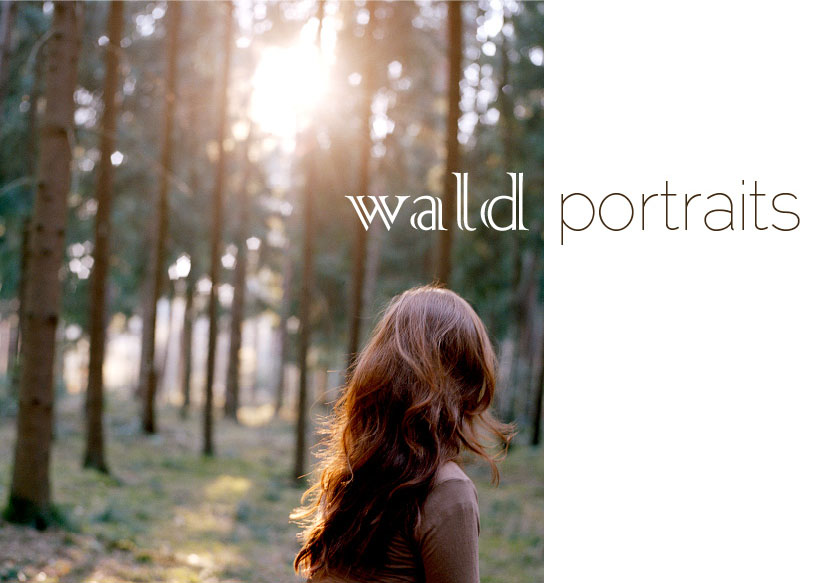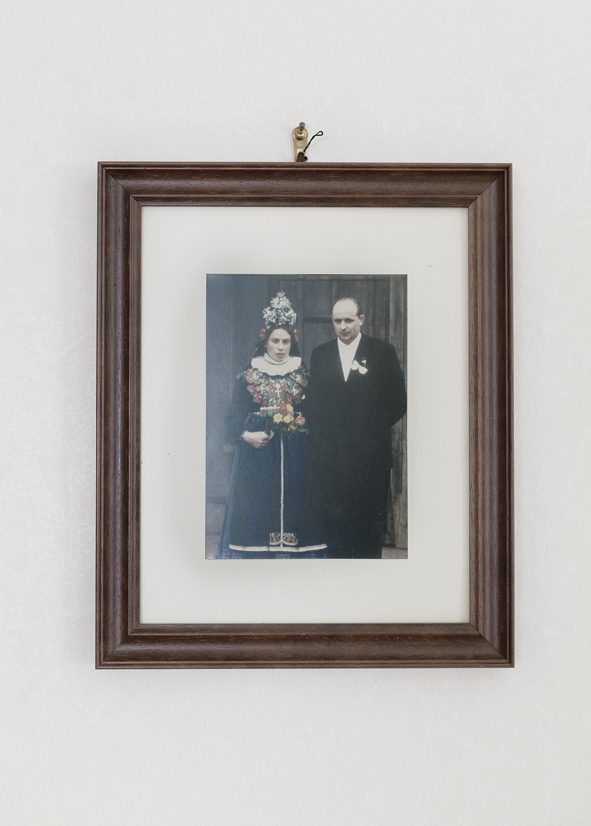

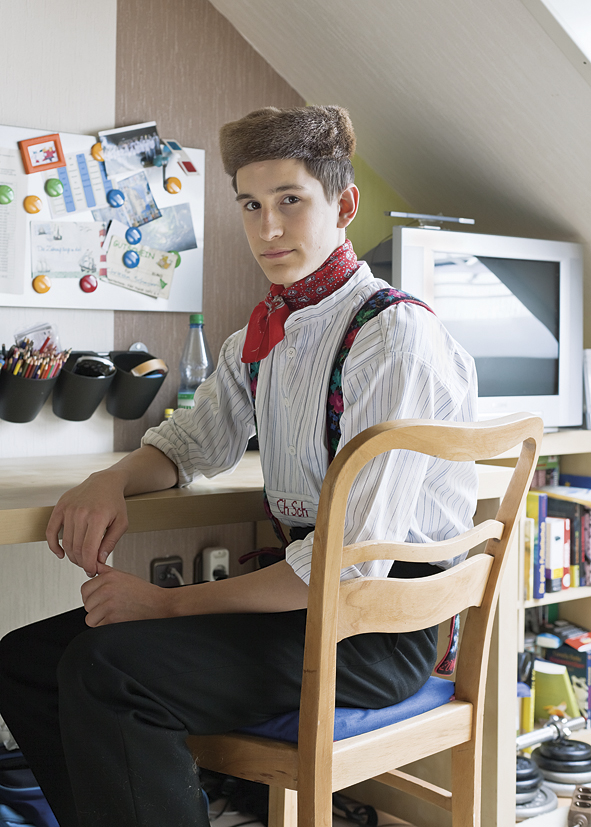




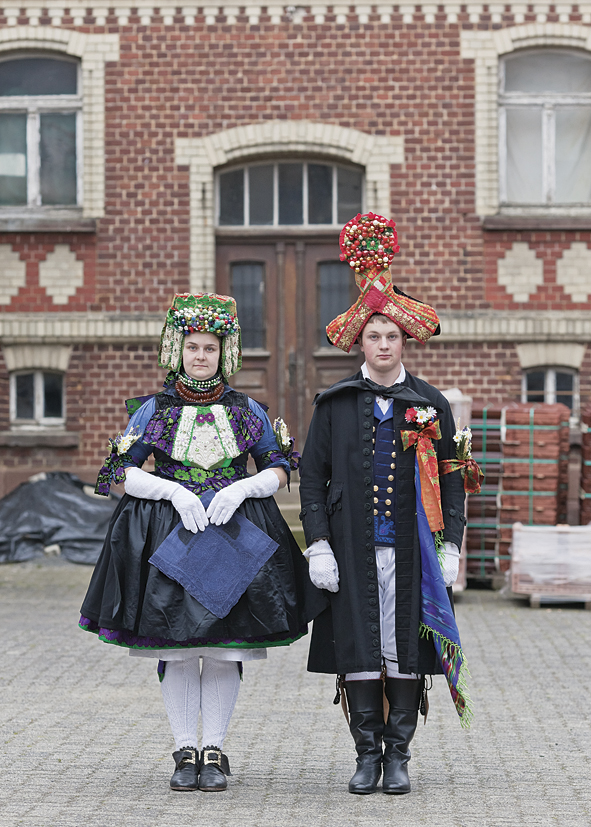
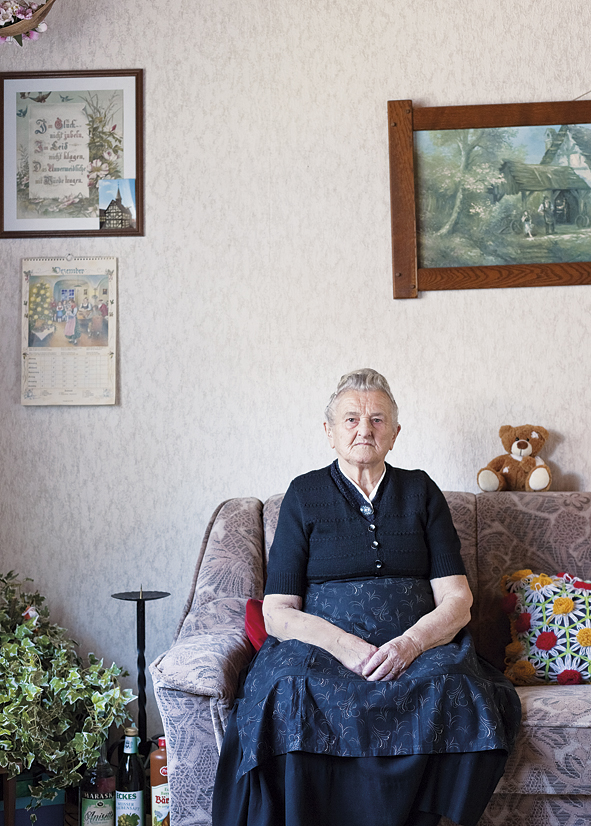


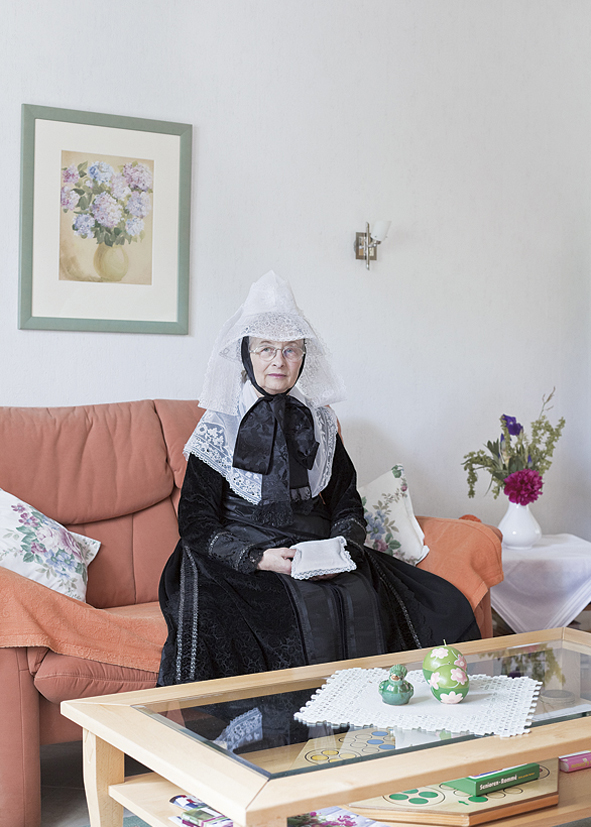








 KONZEPT
KONZEPTAngezogen von fremden Kulturen, in einer immer schnelllebigeren Welt, sehnt sich der Mensch nach Entschleunigung und Natürlichkeit. Volksfeste sind im Trend und zahlreiche Medienformate berichten von ursprünglichem Landleben, Handwerkskunst und Brauchtum. In der Mode haben traditionelle Kleidungselemente unlängst Einzug gehalten und die Werbung nutzt die stilisierte Symbolhaftigkeit zur Vermarktung von authentischen und ursprünglichen Produkten. Diese Darstellung zeigt eine verfremdete Oberfläche eines Kulturgutes, das weitaus mehr zu bieten hat, als exotisch wirkende Kleider. Offgesetz und Bortefirwes sind im hessischen Dialekt Begriffe für Brautkrone und Frauenschuhe. Von Kopf bis Fuß, heißt es, soll man einen Menschen anschauen, um zu erkennen welche Person sich hinter der Kleidung verbirgt. Doch wer trägt heute noch Tracht und kann man den Kleidungscode entschlüsseln? Carmen Kirchhain hat in ihrer fotografischen Arbeit Menschen aufgesucht, welche die Volkstrachten in der trachtenreichsten Region in Deutschland, in Hessen, tragen.Zwischen Privatraum und öffentlicher Bühne geben die portraitierten Menschen einen Einblick hinter die Kleidungsoberfläche. Frauen die ihre Werktagstracht im Alltag als Selbstverständlichkeit tragen bis hin zu Kinder, für welche die Volkstrachten eine Art Kostümierung darstellt.Doch welche Persönlichkeit steckt hinter der Kleidung, lässt der private Raum Aufschlüsse zur wahren Identität & Charaktere der Personen zu und in welchem Kontext und zeitlicher Verortung befinden sich die fotografierten Menschen?
Concept
Attracted by unfamiliar cultures and in today’s fast moving world, people long for a chance to wind down and enjoy the natural and authentic. Festivals crest the wave of current trends and numerous media-formats report on back-to-the-roots country life, crafts and traditions. Traditionally influenced articles have recently become a part of the fashion world and the advertising industry exploits this stylised symbolism for the marketing of authentic and traditional products. This view, however, shows an altered face of a cultural asset that has much more to offer than exotic fashion looks. ‚Offgesetz‘ (literally placed on top) and ‚Bortefirwes‘ are Hessian dialect words for bridal crown and women’s shoes. As the saying goes, you have to look at a person from head to foot to reveal the character hidden behind the clothes. But who still wears traditional regional dress and is able to decode the mysteries of its dress code? For the portfolio, Carmen Kirchhain went looking for people who still wear traditional regional dress in the bastion of traditional clothing, the state of Hesse. Between private rooms and public stages, the people let us take a look behind outward appearances, from women who wear everyday traditional dress as a matter of course to children who see traditional dress as a kind of cosplay. But who are the characters behind the outward appearance, does the private sphere gives us clues that their true identities, and in what context and temporal setting are the people captured in these pictures to be found?
Attracted by unfamiliar cultures and in today’s fast moving world, people long for a chance to wind down and enjoy the natural and authentic. Festivals crest the wave of current trends and numerous media-formats report on back-to-the-roots country life, crafts and traditions. Traditionally influenced articles have recently become a part of the fashion world and the advertising industry exploits this stylised symbolism for the marketing of authentic and traditional products. This view, however, shows an altered face of a cultural asset that has much more to offer than exotic fashion looks. ‚Offgesetz‘ (literally placed on top) and ‚Bortefirwes‘ are Hessian dialect words for bridal crown and women’s shoes. As the saying goes, you have to look at a person from head to foot to reveal the character hidden behind the clothes. But who still wears traditional regional dress and is able to decode the mysteries of its dress code? For the portfolio, Carmen Kirchhain went looking for people who still wear traditional regional dress in the bastion of traditional clothing, the state of Hesse. Between private rooms and public stages, the people let us take a look behind outward appearances, from women who wear everyday traditional dress as a matter of course to children who see traditional dress as a kind of cosplay. But who are the characters behind the outward appearance, does the private sphere gives us clues that their true identities, and in what context and temporal setting are the people captured in these pictures to be found?












